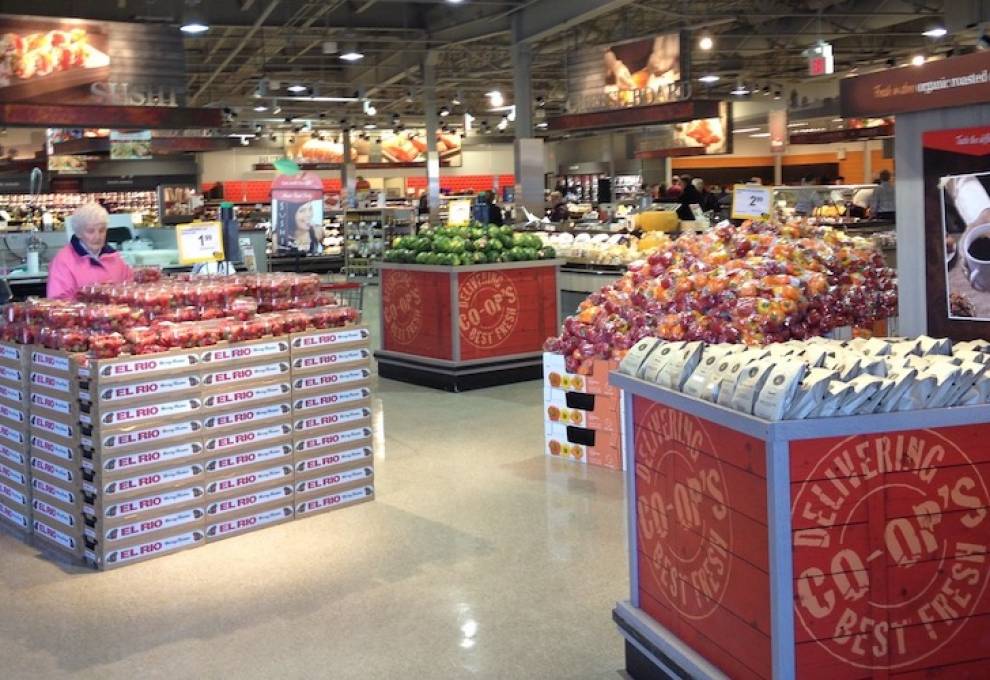
As we continue to move across the country to explore the different markets of Canada, we arrive in Alberta. It’s the largest, by population of the prairie provinces and a very important market for food production in Canada. With significant acreage devoted to wheat, grain, pulses and livestock production the province produces a significant amount of food but not a lot of fruits and vegetables, aside from potatoes.
Alberta is the fourth largest province in terms of total population, therefore the fourth largest market for selling food. The interesting fact about Alberta population is the growth of the market. In the following table, provincial population growth in Alberta is highest among provinces and double the national average:
|
Population growth by province-Statistics Canada |
|||
|
|
2007 |
2017 |
Growth(%) |
|
Newfoundland and Labrador |
509,039 |
528,817 |
3.9 |
|
Prince Edward Island |
137,721 |
152,817 |
10.4 |
|
Nova Scotia |
935,071 |
953,869 |
2.0 |
|
New Brunswick |
745,407 |
759,655 |
1.9 |
|
Quebec |
7,692,736 |
8,394,034 |
9.1 |
|
Ontario |
12,764,195 |
14,193,384 |
11.2 |
|
Manitoba |
1,189,366 |
1,338,109 |
12.5 |
|
Saskatchewan |
1,002,048 |
1,163,925 |
16.2 |
|
Alberta |
3,514,031 |
4,286,134 |
22.0 |
|
British Columbia |
4,290,988 |
4,817,160 |
12.3 |
|
Yukon |
32,557 |
38,459 |
18.1 |
|
Northwest Territories |
43,374 |
44,520 |
2.6 |
|
Nunavut |
31,395 |
37,996 |
21.0 |
|
Total Canada |
32,887,928 |
36,708,083 |
11.6 |
In most parts of Canada, growth is occurring more from immigration into the country from other parts of the world. This does happen in Alberta but there is also a significant segment of the growth happening due to inflows from other provinces. The economy has been the major influence with people moving to Alberta to find work or more lucrative work. Obviously the decrease in oil prices have slowed this inter-provincial migration in the last two years.
The Alberta government reported the total population to be 4,330,206 on October 1, 2018. The growth has slowed but it does continue to grow. During the decade from 2007 to 2017 the majority of the growth was in the suburbs of Calgary and Edmonton, not the central core. There is also growth in the entire stretch between Calgary and Edmonton. As in other Canadian provinces the population is concentrated in the urban areas with more than 50 per cent of Albertans living in Calgary or Edmonton.
The population growth presents interesting opportunities for food producers and retailers. Growth is great but you have to be able to keep up with it. Consumers have expectations and when they are not met, they go elsewhere. Another challenge of the Alberta economy is there are more drastic swings in consumer discretionary spending. Perhaps not the boom or bust of previous generations but certainly the oil industry and the price of oil impact what many Albertans have to spend or want to spend.
This market also has a median total income that is higher than the Canadian average. In 2015 the median total income in Alberta was $93,835 compared to $70,336 for Canada. These consumers should have more disposable income for food purchases.
Customers influence the buying decision
All of the large food retailers have a presence in Alberta, except Metro.
Co-op stores continue to have a strong presence in Alberta where Calgary Co op operates and consumers have strong ties to this brand. A major investment in stores has positioned this retailer with some contemporary store designs in markets where consumers have the ability to spend more. Co-op continues to be locally owned and supports local products and initiatives.
Loblaw operates Real Canadian Superstores in Alberta and they also supply the Extra Foods and No Frills banners. Previously, Loblaw operated western Canada from Calgary but now it is all operated from the store support centre in Brampton, Ontario. The company does continue to operate warehouses in Alberta to service the market and adjoining provinces.
Sobeys have been restructuring their business nationally and Alberta has experienced changes as well. Sobeys and Safeway stores both operate in the province. The company also supplies some IGA stores and they have indicated plans to bring FreshCo to the western provinces to give them an option in the discount segment of the market. Sobeys operate large distribution centres in Alberta.
Walmart has continued to expand the number of Supercenters in the province. Walmart operates the Alberta stores from its national office in Mississauga, however as in many Walmart markets, stores do have some autonomy to ensure they meet the needs of consumers in the market.
Costco has 17 warehouses in Alberta. The seven stores in the Edmonton market and six stores in the Calgary market are complemented by four stores in Lethbridge, Medicine Hat, Red Deer and Grand Prairie. All stores are operated out of the Burnaby, B.C. Costco office. These warehouses offer similar assortments to warehouses in other regions.
Overwaitea has a significant presence in Alberta with 38 Save-On stores. The stores are similar to the Save-On Foods stores in other markets. It is a conventional store offering with more focus on local. This is the only banner the company operates in Alberta. They continue to open new stores in the market.
Your competition
As we discussed earlier, fruit and vegetable production in Alberta is limited. Consumers in this market want to buy local as much as any other.
|
Percentage of Canadian acres planted |
|
|
Acres of field vegetables planted |
3% |
|
Acres if greenhouse production |
4% |
|
Acres of fruit planted |
5% |
Source: Agriculture Agri-food Canada statistical overview of Canadian Agriculture
Potatoes are the big vegetable crop in Alberta with the province producing 19 per cent of Canadian total weight. Processing and seed are well developed however Alberta farms did produce fresh potatoes valued at $38 million which was 14.5 per cent of the national market.
With a rich history in agriculture and more demand for ‘buy local,’ it will be interesting to see if the selection of local fruits and vegetables grow. Consumers and retailers will continue to expect the selection we see in other markets so if the products are not available from local producers with the specs and standards expected they will come from other regions.
If you have any questions about selling your products or developing strategies for specific customers please give me a call at (902) 489-2900 or send me an email at peter@skufood.com.
WHAT’S IN STORE?
Sources of protein are changing
The launch of the new Canada’s Food Guide has given more awareness to the different sources of protein. If you are visiting stores regularly -- which you should be – watch for the new products. In a visit to a Whole Food Market store in Toronto, there was an entire door devoted to pea protein product. We would expect to see more of these items on shelves soon. Consumers are demanding it and processors are figuring out how to develop popular products.

Add new comment